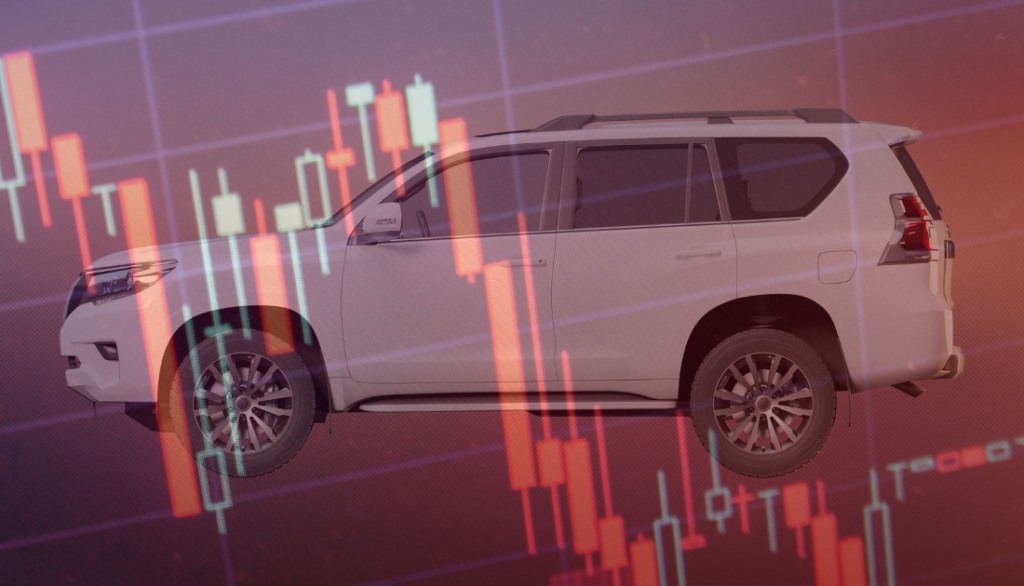Shares of Mahindra & Mahindra, the automotive and farm equipment flagship of the Mahindra Group, took a significant hit, slumping 6.4% in today’s early morning trade to ₹2736 apiece. This decline came a day after the company announced a temporary price cut of up to ₹2 lakh for its top XUV700 variant, the XUV700 AX7. The new pricing, introduced ahead of the XUV700’s third anniversary, will be effective for a limited period of four months starting July 10.
The price reduction aims to boost sales and make the feature-rich AX7 trims more accessible to buyers. According to Mahindra, “The Mahindra XUV700’s fully loaded AX7 range, now starting at ₹19.49 lakh, will enable more people to experience its unmatched driving experience with cutting-edge premium features.” For instance, the AX7 Petrol-MT 6-str is now priced at ₹19.69 lakh, down from ₹21.54 lakh, reflecting a reduction of ₹1.85 lakh.
The move by Mahindra is not isolated. Tata Motors has also implemented price cuts on its SUVs, the Harrier and Safari, effective until July 31. Analysts interpret these price reductions by major players as indicative of weakened demand in the SUV segment. They attribute this trend to reduced inquiries and postponed vehicle purchases, exacerbated by extreme heat waves affecting consumer behavior.
Despite the current market challenges, the XUV700 has had a strong sales performance, becoming the fastest Mahindra vehicle to achieve 1.5 lakh vehicle sales within 30 months of its launch. In FY24, Mahindra experienced significant growth in its SUV revenue market share, climbing by 130 basis points year-on-year to reach 20.4%. This remarkable achievement was fueled by the company’s best-ever sales performance, with a total of 459,877 SUVs sold during FY24.
Mahindra’s strong portfolio in the UV segment includes popular models like Scorpio, Thar, XUV700, and Bolero. The company has been strategically strengthening its UV product portfolio to attract lower tax rates, with products like the XUV300, Bolero Neo, Bolero Power Plus, and Thar. The XUV400, in particular, attracts the minimum GST among all passenger vehicle categories.
Internationally, the XUV700 has gained significant traction, contributing to substantial increases in retail sales in markets like Australia. In South Africa, the Scorpio-N ranks among the top SUVs in the body-on-frame segment, while the XUV300 in Tunisia was honored with the Golden Wheel 2023 award for “Best Seller in its Segment,” according to the company’s FY24 annual report.
In FY24, Mahindra achieved total sales of 8,24,939 vehicles, comprising 7,46,833 four-wheelers and 78,106 three-wheelers. This marked an 18.1% growth compared to the previous year’s total of 6,98,456 vehicles. In the domestic market, Mahindra sold 8,00,276 vehicles, up from 6,66,349 vehicles in the previous year, reflecting robust growth of 20.1%.
Within the passenger vehicle (PV) segment, Mahindra recorded sales of 4,59,877 vehicles, which includes 4,59,864 utility vehicles (UVs) and 13 vans. This marked a significant increase from the previous year’s sales volume of 3,59,253 vehicles, reflecting a notable growth of 28%. The overall Indian automotive industry (excluding 2-wheelers) expanded by 10.1%, with the passenger vehicle segment growing by 8.4% and the commercial vehicle segment growing marginally by 0.6%.
The UV segment, where Mahindra has a strong presence, showed robust growth of 25.8%. Within the commercial vehicle segment, the Light Commercial Vehicles (LCV) goods segment declined by 2.9%, while the Medium and Heavy Commercial Vehicles (MHCV) goods segment saw a marginal decline of 0.2%.
Mahindra & Mahindra’s strategic moves, including the recent price cuts, reflect an effort to adapt to changing market dynamics and consumer behavior. While the temporary price cut for the XUV700 AX7 variant may boost sales in the short term, the broader challenges in the SUV segment highlight the need for ongoing innovation and market adaptation.
As Mahindra continues to strengthen its product portfolio and expand its global footprint, its ability to navigate these challenges will be crucial for maintaining its market leadership and driving future growth.

